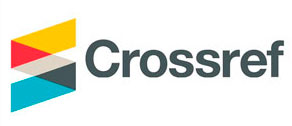THEORETICAL AND PRACTICAL RECOMMENDATIONS TO CREATE A DISTANCE LEARNING COURSE.
Abstract
The modern world requires teachers to address the technical and technological possibilities of a new type of reality – virtual. Distance course promotes a new type of educational space, where they will combine technical and non-technical skills of teachers and students. Creating sufficient distance course requires thorough preparation which has to absorb the introduction of modern information technology capabilities, cognitive and pedagogical concepts.
When creating such courses, there are many issues including the creation of information-educational space. This is a specialized subspace of the global educational space, a common information space with subsystem of education. It products to form educational institutions subordinated to the objectives of training and education of students. Creating such a space is one of the urgent problems of modern education, both in the whole world and on the national level.
A particularly acute issue arises in Ukraine. Its formation is associated with problems of creating a single regulatory framework, selection of appropriate information and communication technologies, active communication, giving rise to the issue of reliable operation, creation and use of educational sites, portals.
The philosophy of education always analyzes cognitive theories that constitute or form the basic pedagogical strategy. Distance course can be created based on a new cognitive-educational concept – connectivism. The author describes the main principles of the connectivism application.
The author shows how to build structural architectonic of the distance course. The names of its component parts describe their content. Practical recommendations are presented.
Bloom's taxonomy is analyzed, explaining its connectivity with competence, which should focus on the new paradigm of education – the understanding paradigm. One of the main tasks of the course design and development is the establishment of goals whose achievement will be decisive for this course. There are the questions of targets, which should be put by a teacher, as well as teaching materials. This layer of recommendations is based on the work of B. Bloom and entitled "B. Bloom’s taxonomy". This is the hierarchical system of educational goals, which consists of three areas: Cognitive Domain – cognitive (cognitive), Affective Domain – affective (emotional values), Psychomotor Domain – psychomotor.
B. Bloom has put in the first place the phenomenon of action. Why action is so important for a new paradigm of education? The action is connected with competence. Competence was seen as an organic unity of knowledge and skills that are essential for decision-making in a changing world. Be competent – is to be able to mobilize knowledge and experience in this situation. Competence is shown when knowledge in a particular situation is moving into action.
Key words: mix education, distance learning course, connectivism, Bloom’s taxonomy, competence, structural architectonic of the distance course

